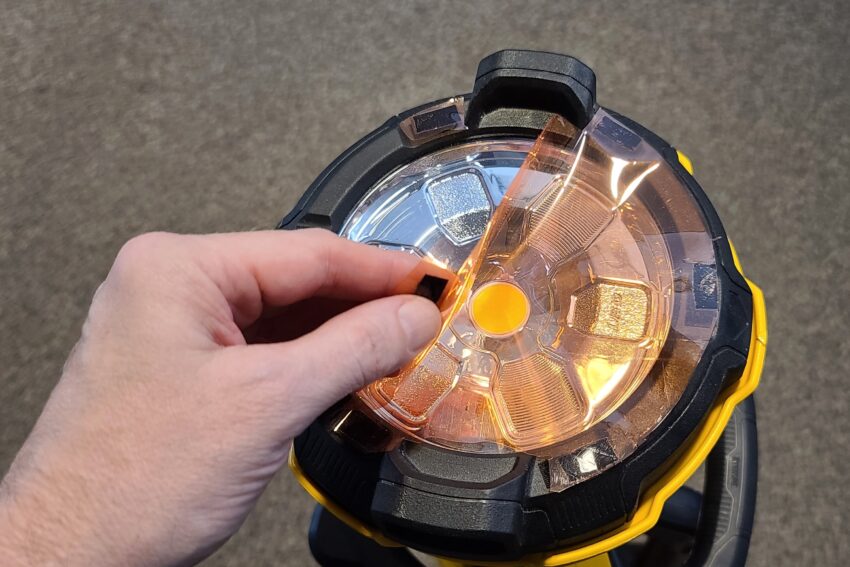Using Color Correcting Gels Helps in a Variety of Lighting Applications
Sometimes you may be forced to use a daylight bulb mixed with a warm bulb or vice versa. Or, you may want to change the color of your bulbs altogether. You can buy colored bulbs and you can buy LED bulbs that change colors with Amazon Alexa voice commands or a phone app. As an alternative to buying new bulbs, you can also change the color of your existing bulbs or lighting by using color correcting gels.
Gels are sheets of thin colored translucent plastic used in the theater and movie industry to change the color of lights. They are available from B&H Photo or Amazon.
Changing Bulb Color Temperature
Throwing a party is a classic example of when using color correcting gels to change the color of your existing bulbs helps. For example, the Museum I work at recently had a fundraiser in someone’s yard. We needed to light a large dark area. I borrowed a few battery-powered work lights. Among them were the DeWalt DCL079 Tripod light, the Flex Tower light, and the Milwaukee M18 2136 Rocket light. Each one has something very close to a daylight-balanced bulb (5000K).
I put a CTO (Color Temperature Orange) on two of them which changes 5000K to 3000K. I then put a pink gel on another. The gels were attached with black tape since it was temporary

Making Color Correcting Gels Removable
You can also make color correcting gels removable when using them for applications where you may need to switch back and forth. For my personal Dewalt light, I keep a CTO gel on it. Small Velcro strips let me remove it as needed. The results look great and I have a nice dual-purpose lighting solution.
I keep at CTO gel on my personal work light. When I’m working in areas with warm lighting, such as a client’s home, the light looks better if I change the color to match. I also prefer warm lights over cool white as it is more pleasing to work under. If I need to remove the gel to match cool white lights, it only takes a few seconds.
Final Thoughts
Using color correcting gels in lighting is a great way to extend the life of your lights. It also lets you use them in a wider variety of applications. It lets you act as if you have a whole selection of lights—even if you only have a set in one particular color temperature.



